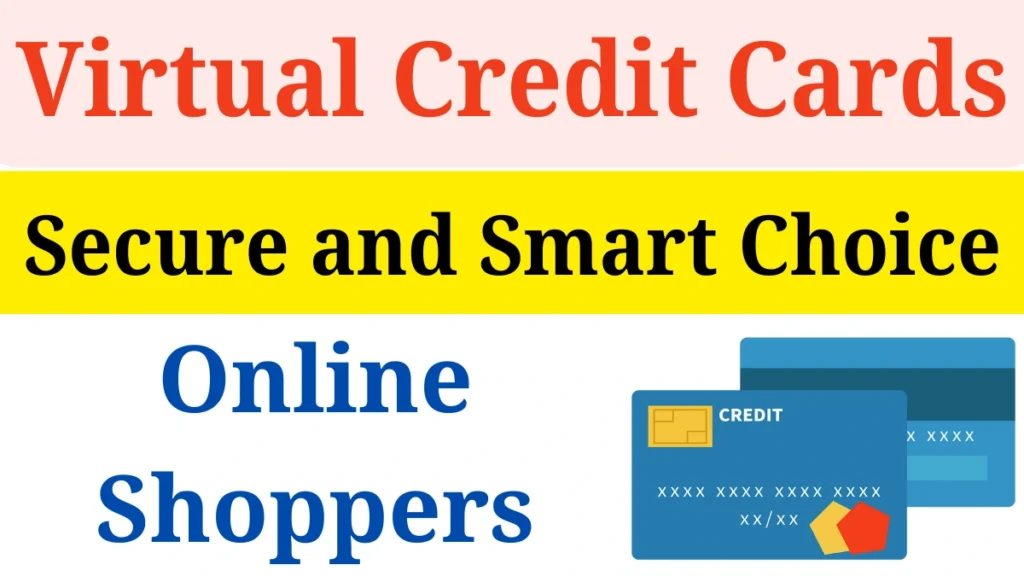Virtual Credit Cards Launch: In today’s fast-paced world, we all strive to save as much time as possible, and technology has become a key ally in this effort. Technology not only makes us smarter but also teaches us efficient ways to complete various tasks. A great example is how we handle transactions today. About 15 years ago, people had to physically go to the bank to conduct any financial transactions. Now, online payments allow us to complete transactions within seconds.
While online payments have simplified transactions, they have also led to a rise in online fraud. With debit and credit card information at risk of being stolen, there’s an ever-present danger despite efforts to use secure payment methods. To tackle these risks, a safer option has emerged—Virtual Credit Cards (VCCs). Let’s take a closer look at how these cards work and their benefits.
What is a Virtual Credit Card?
A virtual credit card functions much like a physical credit card but is specifically designed for online payments. Issued by banks, a virtual credit card is linked to your actual credit card account but generates a temporary card number for online transactions. This temporary number provides a layer of security when you shop online, protecting your actual card details.
To obtain a virtual credit card, you need a bank account, as banks issue these cards. Each bank may have slightly different features and services for virtual cards, but generally, you can create one easily through the bank’s website or mobile app.
Read More :
How Virtual Credit Cards Work and Their Benefits for Businesses
Virtual credit cards come with advanced security features. When you generate a virtual card, it provides a unique card number, CVV, and expiration date, similar to a physical card. However, the card number is temporary, often valid for just one transaction or for a limited period, such as 24 to 48 hours. When making an online purchase, you enter these temporary details, and the payment amount is deducted from your actual credit card or bank account.
Virtual credit cards offer a secure, convenient payment solution for businesses. Once approved for a virtual business card line of credit, companies can issue virtual cards and make payments through a straightforward five-step process:
- Payment Authorization: The company sends an approved payment request to its virtual card provider, typically a bank or financial institution.
- Card Generation: The provider creates a unique, 16-digit virtual card number for the exact payment amount.
- Card Delivery: The virtual card is securely sent to the payee, often via email, who then processes the transaction through their bank.
- Transaction Settlement: Both the payee’s and the company’s banks authorize and settle the transaction.
- Automated Reconciliation: The payment is posted to the company’s account, and a reconciliation file is sent to the company’s ERP system to match with outstanding invoices.
Key Benefits of Virtual Credit Cards for Businesses
- Enhanced Expense Management: Virtual cards provide detailed reporting, allowing businesses to track and analyze spending in real-time. Spending limits can be set per card to ensure compliance with budgets and policies.
- Streamlined Processes: Virtual card transactions integrate with ERP systems, automating bookkeeping and simplifying reconciliation. They support accounting, expense management, and procurement, boosting operational efficiency.
- Improved Security: Virtual cards use single-use numbers, significantly reducing the risk of data exposure and unauthorized use, as each card number is only valid for a specific transaction.
Benefits of a Virtual Credit Card
- Enhanced Security: Virtual cards greatly reduce the risk of fraud, thanks to their temporary numbers and advanced security features.
- Controlled Spending: These cards help control spending limits, which is ideal for setting boundaries on online expenses.
- Convenient Payments: Virtual cards allow instant generation of new card details for secure and quick payments.
How to choose a virtual credit card provider?
When selecting a virtual credit card provider, businesses should look for features that align closely with their organizational needs. One critical consideration is the credit card network; since virtual cards may run on networks like Visa or Mastercard, companies should ensure that their existing vendors accept the provider’s chosen network.
Another key factor is software integration. Providers that offer seamless connections with a business’s current accounting or treasury software can enhance operational efficiency and streamline workflows. Lastly, card controls are essential. Companies should confirm that the provider offers robust controls for spending limits and usage restrictions, which allow managers to set rules according to company policies, ensuring responsible spending across departments.
Drawbacks of a Virtual Credit Card
- Limited Use: Virtual credit cards are mainly for online payments and aren’t suitable for in-store purchases or some other types of transactions.
- Short Validity: With limited validity, users often need to generate new card details repeatedly, which can be inconvenient.
- Limited Acceptance: Not all online merchants accept virtual credit cards, which can sometimes make online payments more challenging.
Conclusion
Virtual credit cards are especially useful for people who frequently shop online, as their enhanced security features minimize the risk of fraud. However, for users who rarely shop online, these cards might not be as beneficial. For occasional online shoppers, the limited validity and acceptance of virtual cards could present more hassle than convenience.
Thus friends, in this article today, we have provided you very brief and accurate and correct information about virtual credit card. People want to get more information in a very short time, so all the information we have included in the article is absolutely accurate and correct, please share this information with your friends.

